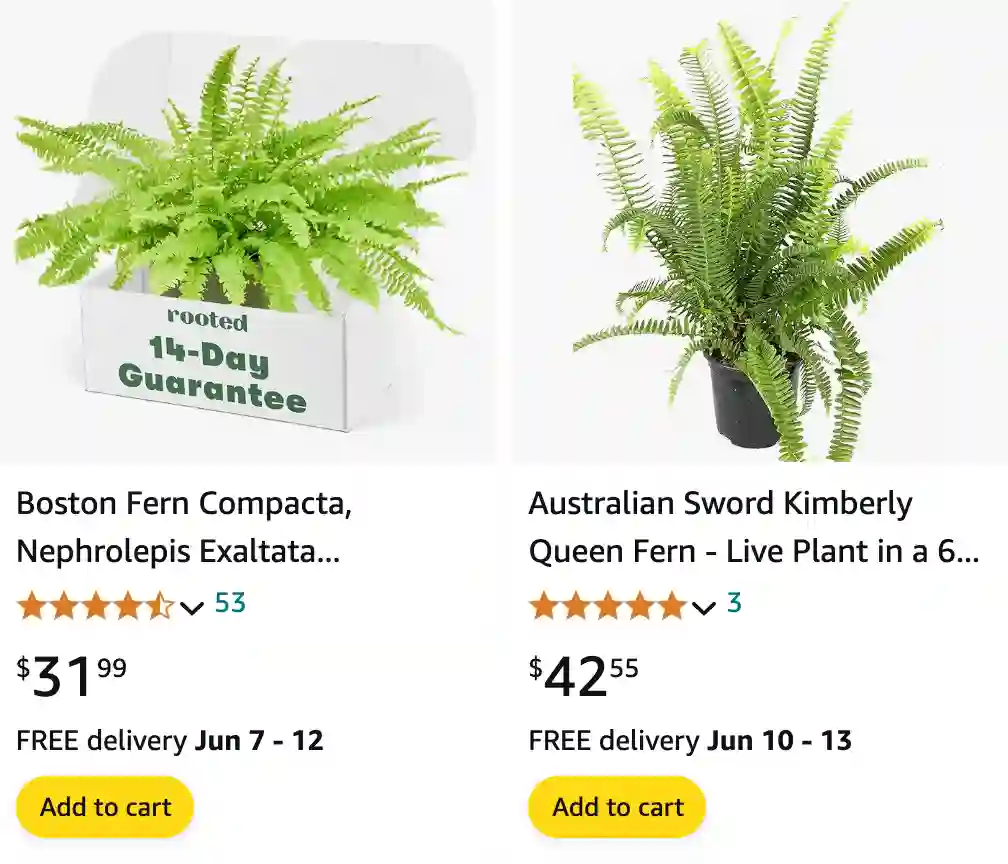Ferns are an ancient group of plants that have captivated botanists, nature enthusiasts, and gardeners for centuries. Their delicate fronds and lush green foliage make them a popular choice for both indoor and outdoor landscaping. Within the realm of ferns, there exists a diverse and intriguing genus, a group of closely related species that share common characteristics. In this post, we’ll take a closer look at the genus of fern and explore some of its fascinating aspects.
Before delving into the specifics of the genus of fern, let’s clarify what a genus is in botanical classification. In the hierarchical system of biological taxonomy, a genus is a rank above species but below family. It represents a group of closely related species that share common characteristics and are more similar to each other than to species in other genera.
Ferns, as a group, exhibit remarkable diversity in terms of their forms, sizes, and habitats. From the diminutive, moss-like filmy ferns that cling to rocks in moist forests to the towering tree ferns of tropical rainforests, ferns have adapted to a wide range of environments around the world. The genus of fern is no exception to this diversity, with numerous species each having its unique characteristics and adaptations.
While ferns comprise a vast and diverse group, several genera within this group stand out for their unique features and widespread distribution. Let’s explore a few of these genera:
1. Abacopteris
2. Abrodictyum
3. Acrosorus
4. Acrostichum
5. Actiniopteris
6. Actinostachys
7. Acystopteris
8. Adenophorus
9. Adiantopsis
10. Adiantum
11. Aglaomorpha
12. Alansmia
13. Aleuritopteris
14. Alsophila
15. Amauropelta
16. Anemia
17. Angiopteris
18. Anogramma
19. Antrophyopsis
20. Antrophyum
21. Arachniodes
22. Archigrammitis
23. Argyrochosma
24. Arthrobotrya
25. Arthromeris
26. Arthropteris
27. Aspidotis
28. Asplenium



29. Astrolepis
30. Athyrium
31. Austroblechnum
32. Austrogramme
33. Azolla

34. Blechnopsis
35. Blechnum

36. Blotiella
37. Bolbitis



38. Bommeria
39. Bosmania
40. Botrychium
41. Calciphilopteris
42. Callistopteris
43. Calochlaena
44. Calymmodon
45. Campyloneurum
46. Cephalomanes
47. Ceradenia
48. Ceratopteris

49. Cerosora
50. Cheilanthes
51. Cheiroglossa
52. Cheiropleuria
53. Chingia
54. Christella
55. Christensenia
56. Cibotium
57. Cochlidium
58. Coniogramme
59. Coryphopteris
60. Cranfillia
61. Crepidomanes
62. Cryptogramma
63. Ctenitis
64. Ctenopterella
65. Culcita
66. Cyathea
67. Cyathidaria
68. Cyclodium
69. Cyclogramma
70. Cyclopeltis
71. Cyclosorus
72. Cyrtomium

73. Cystopteris
74. Danaea
75. Dasygrammitis
76. Davallia

77. Dendroconche
78. Dennstaedtia

79. Deparia
80. Desmophlebium
81. Dicksonia

82. Dicranopteris
83. Dictymia
84. Didymoglossum
85. Diplaziopsis
86. Diplazium
87. Diploblechnum
88. Diplopterygium
89. Dipteris
90. Doodia
91. Doryopteris
92. Dracoglossum
93. Dryopteris



94. Elaphoglossum
95. Enterosora
96. Equisetum
97. Eupodium
98. Gaga
99. Gastoniella
100. Glaphyropteridopsis
101. Gleichenia
102. Goniophlebium
103. Goniopteris
104. Grammitis
105. Grypothrix
106. Gymnocarpium
107. Gymnosphaera
108. Haplopteris
109. Hecistopteris
110. Helminthostachys
111. Hemionitis

112. Histiopteris
113. Hiya
114. Hymenasplenium
115. Hymenophyllum
116. Hypodematium
117. Hypoderris
118. Hypolepis
119. Jamesonia
120. Lastreopsis
121. Lecanopteris

122. Lellingeria
123. Lemmaphyllum
124. Lepisorus
125. Leptochilus
126. Leptopteris
127. Leucostegia
128. Leucotrichum
129. Lindsaea
130. Lomagramma
131. Lomaria
132. Lomaridium
133. Lomariocycas
134. Lomariopsis
135. Lonchitis
136. Lophosoria
137. Loxogramme
138. Lygodium

139. Lytoneuron
140. Marattia
141. Marsilea


142. Matonia
143. Megalastrum
144. Melpomene
145. Menisciopsis
146. Metaxya
147. Mickelia
148. Microgramma
149. Microlepia
150. Micropolypodium
151. Microsorum


152. Mildella
153. Monachosorum
154. Monogramma
155. Mycopteris
156. Myriopteris
157. Neocheiropteris
158. Neolepisorus
159. Nephrolepis


160. Nesolindsaea
161. Niphidium
162. Notholaena
163. Oceaniopteris
164. Odontosoria
165. Oenotrichia
166. Oeosporangium
167. Oleandra
168. Olfersia
169. Onychium
170. Ophioderma
171. Ophioglossum
172. Oreopteris
173. Ormopteris
174. Osmolindsaea
175. Osmunda
176. Paesia
177. Parablechnum
178. Paragymnopteris
179. Parapolystichum
180. Parathelypteris
181. Pecluma
182. Pellaea

183. Pentagramma
184. Pentarhizidium
185. Phanerophlebia
186. Phanerosorus
187. Phegopteris
188. Phlebodium
189. Physematium
190. Pilularia
191. Pityrogramma
192. Plagiogyria
193. Platycerium
194. Plenasium
195. Pleocnemia
196. Pleopeltis
197. Pneumatopteris
198. Polybotrya
199. Polyphlebium
200. Polypodiopteris
201. Polypodium
202. Polystichopsis
203. Polystichum
204. Polytaenium
205. Pronephrium
206. Psilotum
207. Pteridium
208. Pteridrys
209. Pteris
210. Pterozonium
211. Ptisana
212. Pyrrosia
213. Radiovittaria
214. Rhachidosorus
215. Rumohra
216. Saccoloma
217. Sadleria
218. Salpichlaena
219. Salvinia


220. Sceptridium
221. Schizaea
222. Selliguea
223. Serpocaulon

225. Sphenomeris
226. Stegnogramma
227. Stenochlaena
228. Sticherus
229. Stigmatopteris
230. Struthiopteris
231. Syngramma
232. Taenitis
233. Tapeinidium
234. Tectaria
235. Teratophyllum
236. Terpsichore
237. Thelypteris
238. Thylacopteris
239. Tmesipteris
240. Todea
241. Trachypteris
242. Tricholepidium
243. Trichomanes
244. Triplophyllum
245. Tryonia
246. Vaginularia
247. Vandenboschia
248. Vittaria
249. Woodsia
250. Woodwardia
251. Zealandia
Conclusion: The Genus of Fern – A World to Explore
Ferns play essential roles in ecosystems as they provide shelter and food for various wildlife species. They also contribute to soil stabilization and nutrient cycling. However, like many other plant groups, some fern species face threats due to habitat loss and climate change. Conservation efforts are underway to protect these unique plants and their habitats.
The genus of fern encompasses a vast and captivating world of plant diversity. From their wide array of forms and habitats to their crucial ecological roles, ferns are plants worthy of admiration and study. Whether you’re a seasoned botanist or simply appreciate the beauty of nature, exploring the genus of fern is an enriching journey into the heart of the plant kingdom. So, next time you encounter a fern in the wild or in your garden, take a moment to appreciate the remarkable diversity and resilience of these ancient plants.



